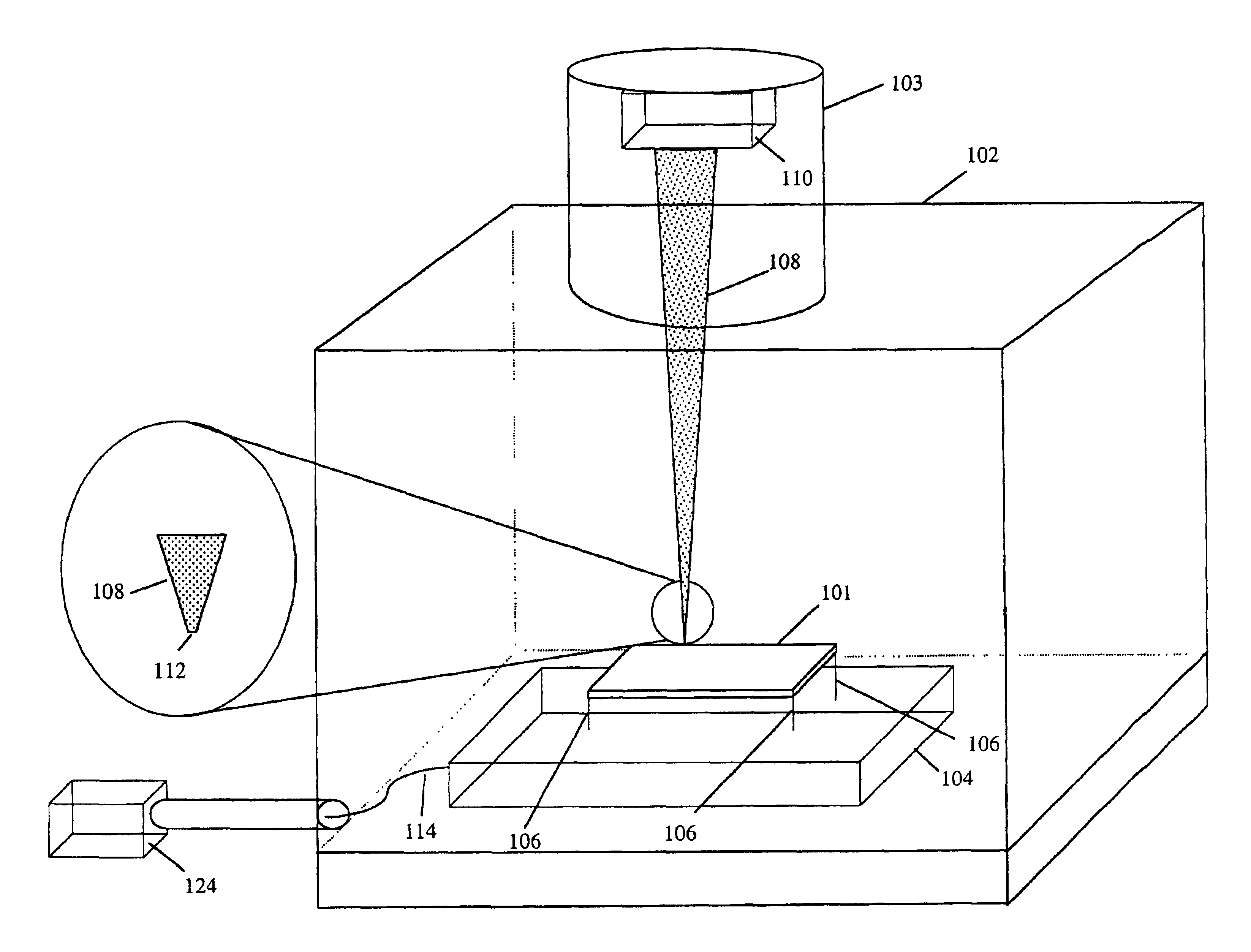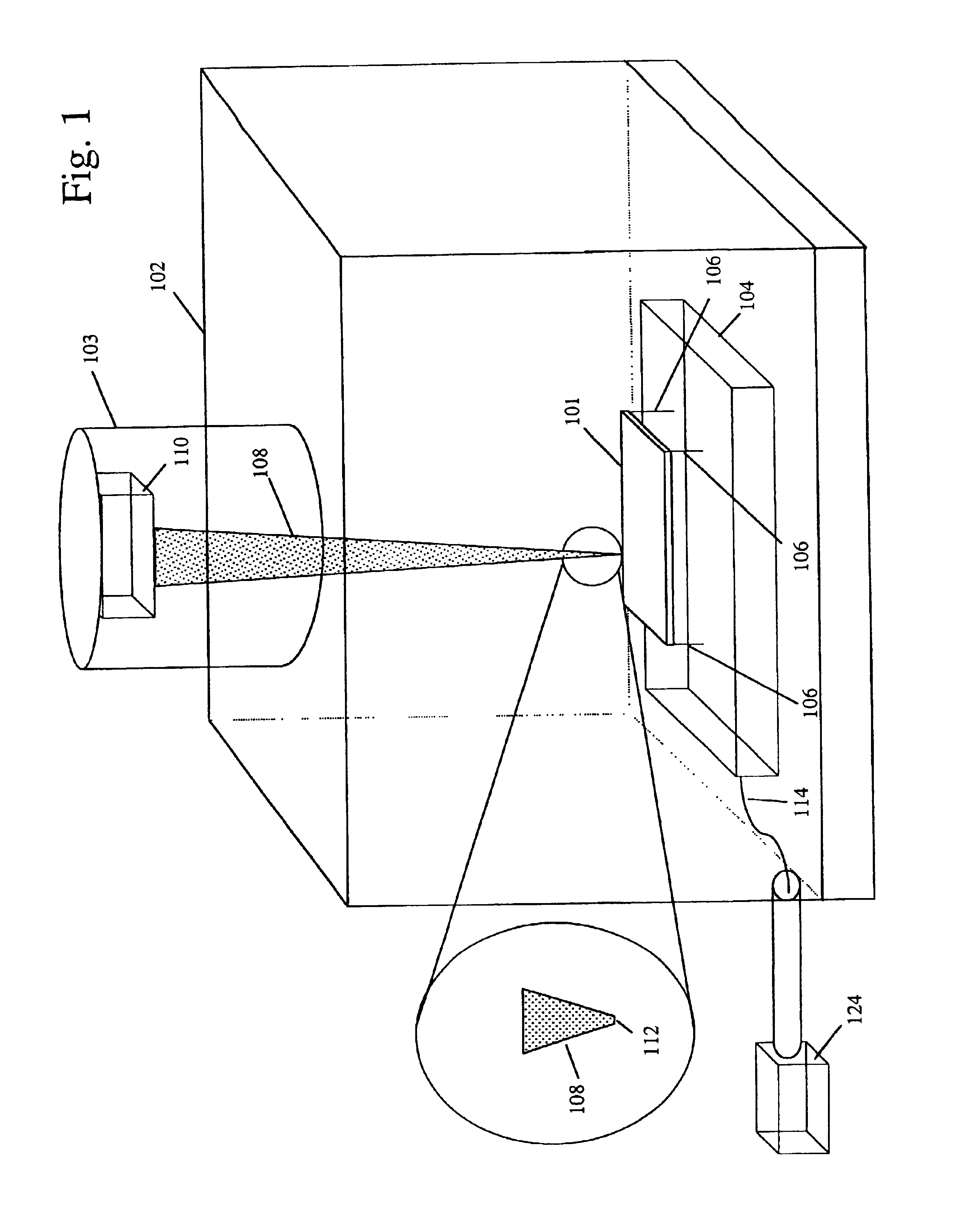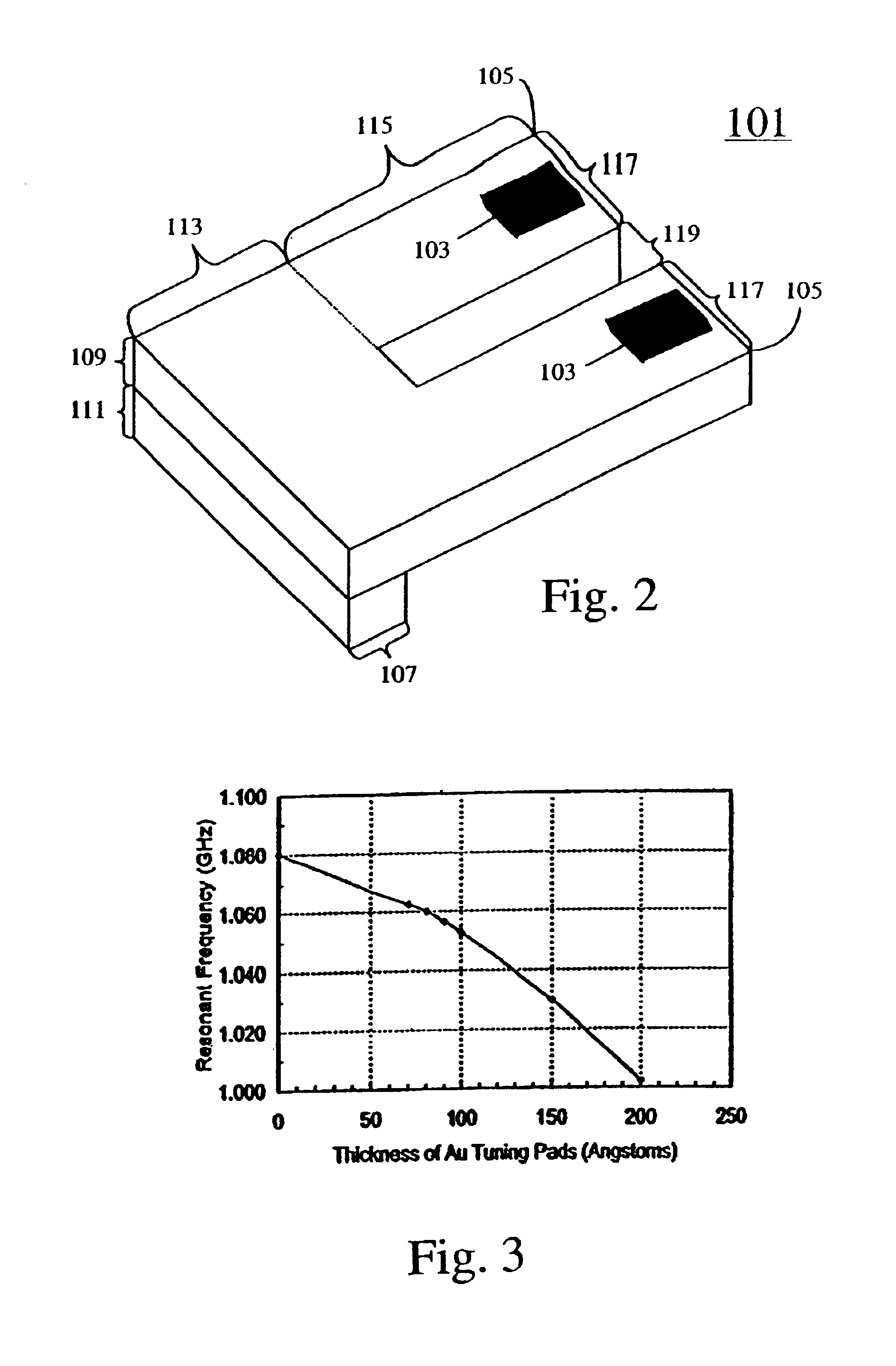Micro electrical mechanical system (MEMS) tuning using focused ion beams
- Summary
- Abstract
- Description
- Claims
- Application Information
AI Technical Summary
Benefits of technology
Problems solved by technology
Method used
Image
Examples
first embodiment
[0025]A method and apparatus for tuning an electromechanical device such as a MEMS device according to a first and preferred embodiment of the present invention are described with reference to FIGS. 1-3. The MEMS device could be any resonator. The resonator can, for example, be shaped like a tuning fork, microstrip, or any other bulk or surface acoustic wave device. Because FIB micromachining is ideal for submicron applications, such micromachining is preferably used for tuning resonators with a resonant frequency roughly greater than 1 MHz. Resonators having resonant frequencies less than 1 MHz can have linear dimensions orders of magnitude larger than the micron scale, and therefore, tuning would require the removal of significant amounts of material. This would require a significant amount of time as FIB micromachining is typically used for removing small amounts of material. However, those skilled in the art will realize that this technique is applicable for tuning resonators ha...
second embodiment
[0031]FIG. 4 shows a second embodiment of the present invention where a piezoelectric drive element 122, such as a speaker, is provided. Piezoelectric drive element 122 powers the resonator 101 using acoustic inertial forces. The piezoelectric drive element 122 is powered by a source outside the specimen chamber 102, not shown in the figure. In some instances electrically powering the resonator 101 may distort the frequency spectrum of the resonator 101, and as such, acoustic power is preferred for powering the resonator 101. Furthermore, the piezoelectric drive element 122 allows the detection of mass imbalances in the resonator 101. The piezoelectric element 122 is driven by circuitry outside the specimen chamber 102 and may be connected to the circuitry using the connecting device 114 discussed in the first embodiment. The piezoelectric drive element 122 preferably has a frequency output of DC to about 10-20 kHz. Mass imbalances result when the mass of the resonator 101 is not eq...
third embodiment
[0032]According to a third embodiment of the present invention, a system is provided which can be used in conjunction with the focused ion beam micromachining technique discussed in the first and second embodiments, to tune an array of resonators to have closely matched resonant frequencies for detecting chemical and biological agents.
[0033]FIG. 5 shows an exemplary model of the system. In this system several MEMS devices are provided. The MEMS devices are preferably resonators 201 and may be comprised of silicon; aluminum-nitride, silicon-carbide, gallium-nitride, quartz, or other variations of semiconductor material. In the preferred embodiment, the resonators 201 are comprised of quartz. The resonators 201 are provided on a support surface 203, and are located beneath a plurality of nozzles 205 on a printhead 207. The printhead 207 is part of a commercial ink-jet based proximal nano-doser. The basic evaluation kit available from Ink Jet Technologies is an example of an ink-jet ba...
PUM
| Property | Measurement | Unit |
|---|---|---|
| Pressure | aaaaa | aaaaa |
| Diameter | aaaaa | aaaaa |
| Diameter | aaaaa | aaaaa |
Abstract
Description
Claims
Application Information
 Login to View More
Login to View More - R&D
- Intellectual Property
- Life Sciences
- Materials
- Tech Scout
- Unparalleled Data Quality
- Higher Quality Content
- 60% Fewer Hallucinations
Browse by: Latest US Patents, China's latest patents, Technical Efficacy Thesaurus, Application Domain, Technology Topic, Popular Technical Reports.
© 2025 PatSnap. All rights reserved.Legal|Privacy policy|Modern Slavery Act Transparency Statement|Sitemap|About US| Contact US: help@patsnap.com



